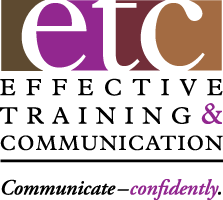Last month’s frustrating rant reminded readers why we don’t listen very well. But not to worry – this month is all about what to do about that situation. Here are lots of simple ways to Make Listening Work for you.
Active Listening Techniques
One way to begin overcoming the Barriers to Listening or at least resisting them for the moment is to consciously practice these Active Listening Techniques:
- Concentrating, allowing for some silence.
- Interpreting feelings as well as fact
- Staying on one subject at a time.
- Allowing speakers to finish their thoughts.
- Using questions to clarify.
- Occasionally summarizing what is being discussed.
- Looking for concepts behind the facts.
Show You’re Listening
Saying to someone else ‘I hear you’ is lame. Of course we hear them – hearing is a physiological process over which we have little control. Saying ‘I’m listening’ rarely works – it sounds patronizing and often false. But showing that you’re listening usually does work. Here are seven types of word tracks to help get you there:
- Encouraging – to show interest, to keep discussion going: “I see…” “Uh-huh … “ “And… “
- Echoing – to show you are listening: “This is what you think we should do.”
- Paraphrasing – to show you are understanding, to indicate what you think, to allow for clarification, to highlight important points, to increase clarity: “If I understand you correctly, you are suggesting that…”
- Reflecting – to respond to a person’s feelings, to show sensitivity, to allow venting: “You feel caught in the middle when…” “That situation has really been frustrating…” “You’re irritated that…”
- Perception Checking – to indicate what conclusions you are making, to show interest and sensitivity: “I’m getting the sense that…” “Let me check my view of the situation…”
- Questioning – to get information, opinions, to check your understanding, to encourage more discussion: “What do you think about…?” “Can you tell me about…?” “Do you want this or that?”
Small Steps
If all these techniques sound like a lot of work … you’re absolutely right! That’s why effective listening is so difficult and, therefore, most of us don’t do it very well. But, fear not. You can begin to take small steps toward becoming a Power Listener:
- Admit that you’re bad at it and that you regularly fall victim to one or more of the Barriers to Listening discussed last month.
- Accept the critical importance of more effective listening at work (at home, too) and commit to doing something about improving your skills.
- Begin practicing some of the Active Listening Techniques. Start small and focus on sustaining improvement.
- Show you’re listening by using more of the word tracks.
It took your whole adult life for your listening skills to get to where they are now. Give yourself plenty of time to work on these simple-but-not-easy improvements to get you where you want to be … are you listening?
